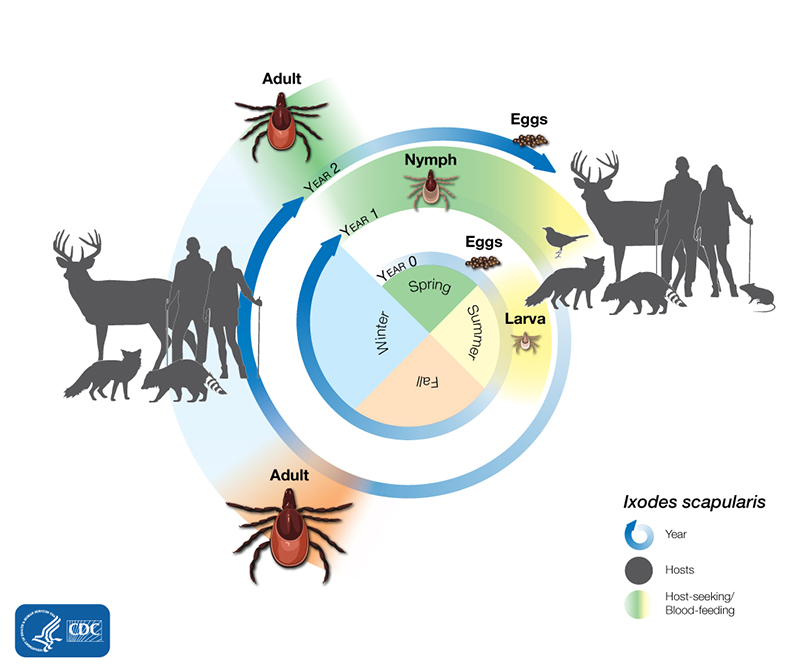Blacklegged tick (Ixodes scapularis) surveillance
To access the data used for this dashboard go to data sets.
Blacklegged tick (Ixodes scapularis) lifecycle

The lifecycle of blacklegged (Ixodes scapularis) ticks generally lasts at least two years. During this time, they go through four life stages: egg, larva, nymph, and adult. After the eggs hatch, the ticks must have a blood meal at every stage to survive. Blacklegged ticks can feed from mammals, birds, reptiles, and amphibians. The ticks need a new host at each stage of their life.